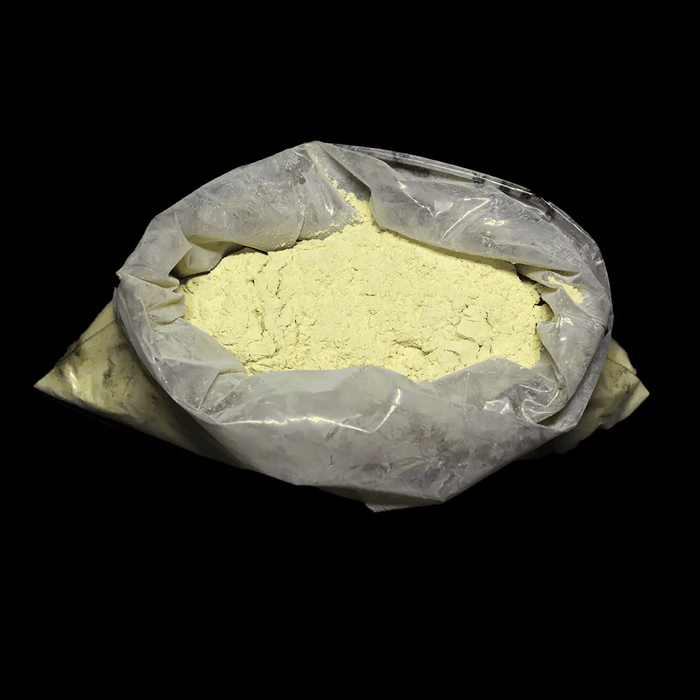Trimetazidine
- CAS NO.:5011-34-7
- Empirical Formula: C14H22N2O3
- Molecular Weight: 266.34
- MDL number: MFCD00868263
- EINECS: 225-690-2
- SAFETY DATA SHEET (SDS)
- Update Date: 2024-07-18 18:48:51

What is Trimetazidine?
Absorption
In elderly patients, a 35 mg oral modified release tablet reaches a mean Cmax of 115 μg/L, with a Tmax of 2.0-5.0 hours, and a mean AUC0-12 of 1104 h*μg/L. In young, healthy patients, the same dose reaches a mean Cmax of 91.2 μg/L, with a Tmax of 2.0-6.0 hours, and an AUC0-12h 720 h*μg/L.
Toxicity
Data regarding overdoses of trimetazidine are not readily available. Treat overdoses with symptomatic and supportive therapy.
The oral LD50 in rats is 1700 mg/kg, and in mice is 1550 mg/kg. The subcutaneous LD50 in rats is 1500 mg/kg, and in mice is 410 mg/kg.
Originator
Vastarel,Biopharma,France,1963
The Uses of Trimetazidine
1-(2,3,4-Trimethoxybenzyl)piperazine is used in combination with atorvastatin in the treatment of coronary heart disease and angina pectoris.
Background
Trimetazidine is a piperazine derivative indicated for the symptomatic treatment of stable angina pectoris in patients inadequately controlled or intolerant to first line therapies. Trimetazidine has been studied as a treatment for angina pectoris since the late 1960s.
Acidic conditions, caused by anaerobic metabolism and fatty acid oxidation, in response to myocardial ischemia, activate sodium-hydrogen and sodium-calcium antiport systems. The increased intracellular calcium decreases contractility. It is hypothesized that trimetazidine inhibits 3-ketoacyl coenzyme A thiolase, which decreases fatty acid oxidation but not glucose metabolism, preventing the acidic conditions that exacerbate ischemic injury. However, evidence for this mechanism is controversial.
Trimetazidine is not FDA approved. However, it has been approved in France since 1978.
Indications
Trimetazidine is indicated for the symptomatic treatment of stable angina pectoris in patients inadequately controlled or intolerant to first line therapies.
Definition
ChEBI: 1-[(2,3,4-trimethoxyphenyl)methyl]piperazine is an aromatic amine.
Manufacturing Process
Monoformylpiperazine is reacted molecule for molecule with 2,3,4-
trimethoxybenzyl chloride in the presence of 1 1/2 molecules of sodium
carbonate and in suspension in ethyl alcohol, during 2 to 3 hours.
The reaction product is filtered and the filtrate is evaporated in vacuo to
remove the alcohol. There remains an oily product from which the excess
formyl-ethylenediamine is removed by distillation under 1 mm Hg pressure up
to 125°C. The dark yellow, residual product is treated with 10% hydrochloric
acid at 100°C for 12 hours to eliminate the formyl group; it is evaporated to a
syrupy consistency and taken up with ethyl alcohol at the boiling point until
complete miscibility is attained; it is then discolored over carbon, filtered and
stored at low temperature.
The (2,3,4-trimethoxyphenyl) methylpiperazine hydrochloride precipitates as
white needles: the precipitate is drained and washed with anhydrous sulfuric
ether. Melting point: 222°C to 226°C.
Therapeutic Function
Coronary vasodilator
Pharmacokinetics
Trimetazidine is indicated for the symptomatic treatment of stable angina pectoris in patients inadequately controlled or intolerant to first line therapies. Patients should be counselled regarding the risk of use with reduced renal or hepatic function, worsening of extrapyramidal symptoms or other movement disorders, and risk of falls.
Metabolism
Trimetazidine can be oxidized at the piperazine ring to form trimetazidine ketopiperazine. Trimetazidine can also be N-formylated, N-acetylated, or N-methylated at the piperazine ring to form N-formyltrimetazidine, N-acetyltrimetazidine, and N-methyltrimetazidine respectively. Alternatively, trimetazidine can be demethylated at the 2, 3, or 4 position of the 2,3,4-trimethoxybenzyl moiety to form 2-desmethyltrimetazidine, 3-desmethyltrimetazidine, or 4-desmethyltrimetazidine. The desmethyltrimetazidine metabolites can undergo sulfate conjugation or glucuronidation prior to elimination.
Properties of Trimetazidine
| Boiling point: | bp2 200-205° |
| Density | 1.092±0.06 g/cm3(Predicted) |
| vapor pressure | 0.003Pa at 25℃ |
| storage temp. | Hygroscopic, Refrigerator, Under inert atmosphere |
| solubility | Chlorofrom (Slightly), Methanol (Slightly) |
| form | Solid |
| pka | 9.07±0.10(Predicted) |
| color | Colourless to Pale Yellow Gel |
| Stability: | Hygroscopic |
| CAS DataBase Reference | 5011-34-7(CAS DataBase Reference) |
Safety information for Trimetazidine
Computed Descriptors for Trimetazidine
Trimetazidine manufacturer
Maps Laboratories Pvt Ltd
Rakshit Group of Companies (Rakshit Drugs Pvt Ltd)
New Products
(S)-3-Aminobutanenitrile hydrochloride 4-Methylphenylacetic acid N-Boc-D-alaninol N-BOC-D/L-ALANINOL Tert-butyl bis(2-chloroethyl)carbamate 3-Morpholino-1-(4-nitrophenyl)-5,6-dihydropyridin- 2(1H)-one Furan-2,5-Dicarboxylic Acid Tropic acid 1-Bromo-3,5-Di-Tert-Butylbenzene S-2-CHLORO PROPIONIC ACID ETHYL ISOCYANOACETATE 2-Bromo-1,3-Bis(Dimethylamino)Trimethinium Hexafluorophosphate 4-IODO BENZOIC ACID 3-NITRO-2-METHYL ANILINE 1-(2,4-DICHLOROPHENYL) ETHANAMINE (2-Hydroxyphenyl)acetonitrile 4-Bromopyrazole 2-(Cyanocyclohexyl)acetic acid 4-methoxy-3,5-dinitropyridine 1-(4-(aminomethyl)benzyl)urea hydrochloride 2-aminopropyl benzoate hydrochloride diethyl 2-(2-((tertbutoxycarbonyl)amino) ethyl)malonate tert-butyl 4- (ureidomethyl)benzylcarbamate Ethyl-2-chloro((4-methoxyphenyl)hydrazono)acetateRelated products of tetrahydrofuran








You may like
-
 5011-34-7 TRIMETAZIDINE HYDROCHLORIDE IH 99%View Details
5011-34-7 TRIMETAZIDINE HYDROCHLORIDE IH 99%View Details
5011-34-7 -
 5011-34-7 98%View Details
5011-34-7 98%View Details
5011-34-7 -
 Trimetazidine 98%View Details
Trimetazidine 98%View Details
5011-34-7 -
 Trimetazidine 5011-34-7 99%View Details
Trimetazidine 5011-34-7 99%View Details
5011-34-7 -
 5011-34-7 Trimetazidine 99%View Details
5011-34-7 Trimetazidine 99%View Details
5011-34-7 -
 5011-34-7 98%View Details
5011-34-7 98%View Details
5011-34-7 -
 14714-50-2 (2-Hydroxyphenyl)acetonitrile 98+View Details
14714-50-2 (2-Hydroxyphenyl)acetonitrile 98+View Details
14714-50-2 -
 118753-70-1 98+View Details
118753-70-1 98+View Details
118753-70-1